![]()
Tao (The Great Mother) is an approachable, comforting, and universal idea
"What is this Tao? The concept transcends the powers of reason and must be grasped intuitively, it is beyond words, beyond all differences and distinction, it is the unchanging, permanent reality of constant change, it is the ground of being and nonbeing, it is akin to the Hindu concept of the Brahman.”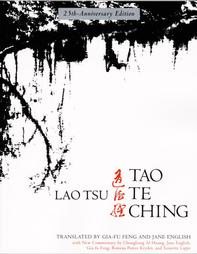
The Tao is called the Great Mother:
empty yet inexhaustible,
it gives birth to infinite worlds.
It is always present within you.
You can use it any way you want.
Tao Te-Ching 6
There was something formless and perfect
before the universe was born.
It is serene. Empty.
Solitary. Unchanging.
Infinite. Eternally present.
It is The Mother of the universe.
For lack of a better name,
I call it the Tao.
It flows through all things,
inside and outside, and returns
to the origin of all things.
The Tao is great.
The universe is great.
Earth is great.
Man is great.
These are the four great powers.
Man follows the earth.
Earth follows the universe.
The universe follows the Tao.
The Tao follows only itself.
Tao Te Ching 25
In the beginning was the Tao.
All things issue from it;
all things return to it.
To find the origin,
trace back the manifestations.
When you recognize the children
and find The Mother,
you will be free of sorrow.
If you close your mind in judgements
and traffic with desires,
your heart will be troubled.
If you keep your mind from judging
and aren't led by the senses,
your heart will find peace.
Seeing into darkness is clarity.
Knowing how to yield is strength.
Use your own light
and return to the source of light.
This is called practicing eternity.
Tao Te Ching 52
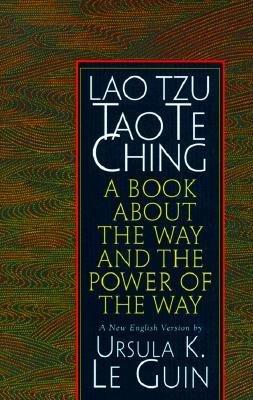
"Scriptures: Tao Te Ching (the Classic of the Way and its Power),
according to tradition written by Lao-Tzu.
Key concepts: the Tao, introduced in the Tao Te Ching as
follows: 'The Tao that can be expressed is not the eternal Tao; the
name that can be defined is not the unchanging name...There is a
thing inherent and natural, which existed before heaven and earth.
Motionless and fathomless, it stands alone and never changes; it
pervades everywhere and never becomes exhausted; it may be regarded
as The Mother of the Universe. I do not know its name. If I am
forced to give it a name, I call it Tao, and I name it supreme...
Man follows the laws of earth; earth follows the laws of heaven;
heaven follows the laws of the Tao; and Tao follows the laws of
its intrinsic nature.'
What is this Tao? The concept transcends the powers of reason and
must be grasped intuitively, it is beyond words, beyond all
differences and distinction, it is the unchanging, permanent
reality of constant change, it is the ground of being and
nonbeing, it is akin to the Hindu concept of the Brahman.”
Taoism
http://www.usao.edu/~usao-ids3313/ids/html/taoism.html
"While Tao is comparable to the highest deities of the world's great religions and mythologies, it is especially unlike the Christian concept of God. There is no anthropomorphizing of Tao in the text, yet it is an entirely approachable, comforting, and universal idea.
Great Tao flows everywhere, / It extends to the left and to the right. / All beings receive It in order to live and to be free. / It works out perfectness in them although It possesses not a Name. / It protects them with love and sustains them, but does not claim to be Ruler of their actions.—ch. 34
One very good method for furthering our understanding of any philosophy is to compare new findings with ideas that are already familiar to us. Students of religious texts or philosophies will recognize some quite striking parallels between these verses and those found in other traditions. One of particular interest has to do with Tao, which creates yet remains apart from its creation or, as mentioned above, 'sustains them but is not ruler of their actions.' We can find this idea practically verbatim in the ninth chapter of the Bhagavad-Gita; likewise in the Vishnu Purana; 'He, though one with all beings, is beyond and separate from material nature (Prakriti), from its products, from proper ties, from imperfections' (Bk. 6, ch. 5).
Taken independently, any of these sources of ancient truth expresses itself profoundly and suggestively, but when they are coalesced into one study, our comprehension is greatly increased. The nature and method of creation, the purpose of being, and a sense of divine impersonality, are just a few thoughts that arise in our minds as a result of this single inquiry into the nature of Tao. In chapter 51 we read: 'It gives them Life, but does not possess them. / It gives them activity, but does not depend on them. / It urges them to grow, but does not rule them.' Tao governs its creations not with threats and fear, but with the knowledge that all life is infused with its life, and that the expression of life is mutually beneficial for the enlightened and unenlightened alike....
It is a rare thing to find an entire philosophy expressed in so few words. The Chinese language being a very concise one, especially as applied in the Tao Teh Ching, has the dual quality of being refreshingly direct and profoundly subtle. Because of its economy of words, this ancient classic has maintained its integrity down through the ages, rendering itself to us in an inspiringly modern way. In the end we perceive Lao-tzu's message as a highly mystical one. It is perhaps on this level that we can best identify with it, for it reaches us out of our shared antiquity, that timeless past of ageless being.”
Sunrise magazine, October/November 1990
Tao Te Ching: "Doorway of the Mysterious Female ... is there within us all the while"
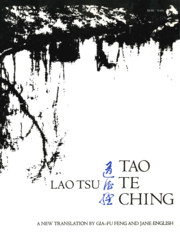
"The reader will notice in the many passages where Lao-tzu describes the Master, I have used the pronoun 'she' at least as often as 'he.' The Chinese language doesn't make this kind of distinction; in English we have to choose. But since we are all, potentially, the Master (since the Master is, essentially, us) I felt it would be untrue to present a male archetype, as other versions have, ironically, done. Ironically, because of all the great world religions the teaching of Lao-tzu is by far the most female.”- Stephen Mitchell
The Feminine Tao
Introduction
The "Tao Te Ching" (pronounced Dao De Jing), literally, "The Book of
the Way and its Virtue," is one of the major source texts in Chinese
Taoism. It was probably compiled in the 6th-5th c. B.C.E., as a
collection of teachings, for the most part passed down from a much
older, oral tradition. The name of its faithfully nameless author,
Lao-tzu (pronounced "Laozi"), means simply "old master.” According to
Ellen M. Chen's translation, "of all the ancient classics still
extant, the Tao Te Ching alone draws its inspiration from the female
principle.” Its profound inclusion of the feminine divine is in fact
essential to its core teaching. As Karyn Lai points out in an
introduction to the TTC's environmental philosophy: its basic
tenor "Is that a more complete life for all forms of existence can be
achieved only through a full appreciation of the connectedness of all
beings.”
This spirit of diversity as a wellspring of spirituality, may be
aided and abetted, in any study of the Tao Te Ching, by utilizing as
many different translations as is comfortable. Allowing these
translations to inform each other is a good way to catch on to the
various spiritual implications and unworded images, suggested but not
spelled out in the ancient Chinese text.
In her essay, "Daode Jing in Practice," Eva Wong comments: "In the
Daoist tradition, study and practice are inseparable: to study is to
practice and to practice is to study. Understanding a text can help
us practice its teachings; practicing its teachings can help us
understand its meanings.”
The Feminine Tao
www.earlywomenmasters.net/tao/index.html
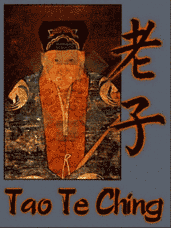
The Tao of Laozi (Lao Tzi)
Journal of Humanistic Psychology, Vol. 43 No. 1, Winter 2003
'Tao' is a Chinese word meaning 'way', 'way of Heaven', 'Path' or 'road' or 'method'. It indicates a line or principle of conduct. There is no proper English term for 'Tao'. It means the 'Eternal Being'.
The Founder of Taoism was Lao-Tze. Lao-Tze was born in 604 B.C. in the village of Chu-Jhren, in Li country, belonging to the Ku province of the State Chu. He was born under the plum tree (in Chinese 'Li'). He adopted it as his surname. The hair of the head was white when he was born. Hence he was called Lao-Tze (old boy) or philosopher, one who is child-like even when old.
He was popularly called Lao-Tze. His name was Er (ear). He was called Tan after his death. 'Tan' means 'long lobe'. He had peculiar long ears. His appellation was 'Po Yang' or"count of positive principle.” He was a keeper or recorder of the secret Archives in the Royal court of Chore. He was a State Historian.
Lao-Tze says: Tao is one. It was in the beginning. It will remain for ever. It is impersonal, eternal, immutable, omnipresent, bodiless, immaterial. It cannot be perceived by the senses. It is nameless. It is indescribable.
It is the first cause from which all substances take their origin and all phenomena flow. The great Tao is all-pervading. All things depend on it for life. It is The Mother of all phenomena, of heaven and earth. It existed before the Personal God. It is the father of God. It is the producer of God. It is the originator of heaven and earth. It is The Mother of all things.
You will find that there is an aroma of Indian Vedantic philosophy in the teachings of Lao-Tze.
Tao is everywhere. It is in the ant. It is in the grass. It is in the earthen-ware vessel. It is in excrement. It is in the highest place but is not high. It is in the, lowest place, but is not low. It is in ancient times, but itself is not ancient. It is in old age but itself is not old. It is everywhere, but appears to be nowhere.
Tao is the sanctuary where all things find refuge. It is the good man's priceless treasure. It is the guardian and saviour of him who is not good. (Sri Swami Sivananda)
Laozi believed that females are The Mothers of all things and all human beings. In accordance with Dao, which generates everything, females are those that produce all things. Without females or mothers, there is nothing else in the world.
The mystery of the valley is immortal;
It is known as the Subtle Female.
The gateway of the Subtle Female
Is the source of the Heaven and Earth. (Chapter 6)
In another chapter, Laozi observed:
The beginning of the world
May be regarded as The Mother of the world.
To apprehend The Mother,
Know the offspring.
To know the offspring
Is to remain close to The Mother,
And free from harm throughout life. (Chapter 52)
As per Daoist humanism, females, instead of males, are usually highly regarded in his writing:
Know the male
Hold to the female;
Become the world's stream.
By being the world's stream
The Permanent De (or humanism) will never leave.
This is returning to Infancy. (Chapter 28)
From this perspective, it is easy to see that femininity and mothering were highly valued by Laozi. Simply speaking, nothing in the world is as important as women and mothers. If many philosophical and religious ideas tend to maintain male superiority or dominance, directly or indirectly (e.g., Confucianism; Hinduism; Christianity, including Mormonism; Islam; Chauvinism; or Freudianism), Daoism differs because females play a more important role in humanism than males. This point may not have been well understood in modern feminist research (see Laughlin & Wong, 1999). Perhaps philosophically or religiously, Laozi could be seen as one of the first proponents of feminism in human history.
Journal of Humanistic Psychology, Vol. 43 No. 1,
Winter 2003 64-85
"The reader will notice in the many passages where Lao-tzu describes the Master, I have used the pronoun 'she' at least as often as 'he.' The Chinese language doesn't make this kind of distinction; in English we have to choose. But since we are all, potentially, the Master (since the Master is, essentially, us) I felt it would be untrue to present a male archetype, as other versions have, ironically, done. Ironically, because of all the great world religions the teaching of Lao-tzu is by far the most female.”
From the introduction to the translation
by Stephen Mitchell

Gu Shen Bu Si,
Shi Wei Xuan Pin.
Xuan Pin Zhi Men,
Shi Wei Tian Di Gen.
Mian Mian Ruo Cun,
Yong Zhi Bu Qin.
"The Valley Spirit never dies.
It is named the Mysterious Female.
And the Doorway of the Mysterious Female
is the base from which Heaven and Earth sprang.
It is there within us all the while;
Draw upon it as you will, it never runs dry.”
Tao Te Ching 6
(World Scripture, International Religious Foundation, Paragon House Publishing, 1995 p. 95.)
The Spirit in the Void never dies.
It is called The Mother-Deep.
The opening of The Mother-Deep is called the Root of Heaven and Earth. (*)
Ceaselessly, ceaselessly,
It nourishes and preserves:
Inexhaustible, without effort.
Tao Te Ching: Chapter 6
translated by Shrine of Wisdom (1924)
(*) SHRINE OF WISDOM says:
"The Mother is Tao 'conceived as having a name,' therefore She is the Root of Yang and Yin. Between the highest Heaven and the nethermost Earth is the fathomless Void where the forms of existence emerge from the opening of The Mother-Deep.”
"The Valley Spirit never dies
It is named the Mysterious Female.
And the doorway of the Mysterious Female
Is the base from which Heaven and Earth sprang.
It is there within us all the while.
Draw upon it as you will, it never runs dry.”
Tao Te Ching, Chapter VI,
Translated by Arthur Waley
The valley spirit never dies.
It is the unknown first mother,
whose gate is the root
from which grew heaven and earth.
It is dimly seen, yet always present.
Draw from it all you wish;
it will never run dry.
Tao Te Ching: Chapter 6
translated by Tolbert McCarroll
The spirit of the valley never dies;
This is called the dark female.
The entry into the dark female
Is called the root of heaven and earth.
Tenuous, it seems as if it were there,
Yet use will never exhaust it.
Tao Te Ching: Chapter 6
translation by D. C. Lau & Sarah Allan (Ma Wang Tui Manuscripts)
The Spirit of the Valley dies not,
it is called Mother-substance of the Deep.
The Door of Mother-substance of the Deep
is called the Root of Heaven and Earth.
Continuously, continuously,
It nourishes and preserves.
Use it,
Thy strength shall not fail.
Tao Te Ching: Chapter 6
translation by Isabella Mears (1922)
"The valley spirit never dies
Call it the mystery, the woman.
The mystery,
the Door of the Woman,
is the root
of earth and heaven.
Forever this endures, forever.
And all its uses are easy.”
Chapter 6, Tao Te Ching
Translated by Ursula K. Le Guin
"The Tao is called the Great Mother
empty yet inexhaustible,
it gives birth to infinite worlds.
It is always present within you.
You can use it any way you want.”
Translated by Stephen Mitchell, Chapter 6
"The life-force of the valley never dies—
This is called the dark female.
The gateway of the dark female—
This is called the root of the world.
Wispy and delicate, it only seems to be there,
Yet its productivity is bottomless.”
Dao De Jing, #6,
Translated by Roger T. Ames and David L. Hall
"The spirit of emptiness is immortal.
It is called the Great Mother
because it gives birth to Heaven and Earth.
It is like a vapor,
barely seen but always present.
Use it effortlessly.”
Tao Te Ching, Chapter 6,
Translated by J. H. McDonald
The valley spirit never dies
Call it the mystery, the woman.
The mystery,
the Door of the Woman,
is the root
of earth and heaven.
Forever this endures, forever.
And all its uses are easy.
Tao Te Ching: Chapter 6
translated by Ursula K. Le Guin
The valley spirit never dies;
It is the woman, primal mother.
Her gateway is the root of heaven and Earth.
It is like a veil barely seen.
Use it; it will never fail.
Tao Te Ching: Chapter 6
translated by Gia-Fu Feng & Jane English
The spirit of the valley never dies.
It is called the mystical female.
The door of the mystical female is the root of heaven and earth.
It seems to be continuously within us.
Use it, and it will never fail.
Tao Te Ching: Chapter 6
translated by Beck
The valley spirit is not dead;
They say it is the mystic female.
Her gateway is, they further say,
The base of heaven and earth.
Constantly, and so forever,
Use her without labour.
Tao Te Ching: Chapter 6
translated by Blackney
The breath of life moves through a deathless valley
Of mysterious motherhood
Which conceives and bears the universal seed,
The seeming of a world never to end,
Breath for men to draw from as they will:
And the more they take of it, the more remains.
Tao Te Ching: Chapter 6
translated by Bynner
The spirit of emptiness is immortal.
It is called the Great Mother
because it gives birth to Heaven and Earth.
It is like a vapour, barely seen but always present.
Use it effortlessly.
Tao Te Ching: Chapter 6
translated by Byrn
The spirit of the valley never dies.
It is called the subtle and profound female.
The gate of the subtle and profound female
Is the root of Heaven and Earth.
It is continuous, and seems to be always existing.
Use it and you will never wear it out.
Tao Te Ching: Chapter 6
translated by Chan
The valley spirit not dying
is called the mysterious female.
The opening of the mysterious female
is called the root of heaven and earth.
Continuous, on the brink of existence,
to put in into practice, don't try to force it.
Tao Te Ching: Chapter 6
translated by Cleary
The De is the immortal energy of the Dao,
its feminine aspect.
Its operation
is of pure Joy and Love, and fails never.
Heaven and Earth issued from her Gate;
this Gate is the root of their World-Sycamore.
Tao Te Ching: Chapter 6
translated by Crowley
The Valley energy never dies.
This is called 'fathomless female'
The channel of the fathomless female:
This is called the basis of the cosmos.
Silken! it's as if it abides.
Handle it gently.
Tao Te Ching: Chapter 6
translated by Hansen
"The Valley Spirit is undying.”
This is mysterious Femininity.
The Abode of mysterious Femininity:
This is the Root of Heaven and Earth.
It seems to endure on and on.
One who uses It never wears out.
Tao Te Ching: Chapter 6
translated by LaFargue
The valley spirit dies not, aye the same;
The female mystery thus do we name.
Its gate, from which at first they issued forth,
Is called the root from which grew heaven and earth.
Long and unbroken does its power remain,
Used gently, and without the touch of pain.
Tao Te Ching: Chapter 6
translated by Legge
The valley spirit has no death
It is appropriately called the all-embracing female
The gateway of The all-embracing female
Is appropriately called the root of heavens and earth.
Continuous, soft, it looks like it exists —
It is infrequently used.
Tao Te Ching: Chapter 6
translated by Lindauer
The Spirit of the Valley never dies.
It is called the Mystic Female.
The Door of the Mystic Female
Is the root of Heaven and Earth.
Continuously, continuously, It seems to remain.
Draw upon it And it serves you with ease.
Tao Te Ching: Chapter 6
translated by Lin Yutan
The spirit of emptiness is eternal.
It is called"The Mysterious Woman.”
Her womb is called"The Source of Heaven and Earth.”
Dimly seen, yet eternally present
It is always there for you to use.
it's easy!
Tao Te Ching: Chapter 6
translated by Mabry
The valley spirit never dies.
it's named the mystic woman.
And the gate of the profound woman
is the root that heaven and earth sprang from.
it's there within us all the while;
draw upon it as you will, you can never wear it out.
Tao Te Ching: Chapter 6
translated by McDonald
The Tao is called the Great Mother:
empty yet inexhaustible, it gives birth to infinite worlds.
The Tao is called the Great Mother:
empty yet inexhaustible, it gives birth to infinite worlds.
It is always present within you.
You can use it any way you want.
Tao Te Ching: Chapter 6
translated by Mitchell
The valley spirit never dies. It is called"The mysterious female.”
The opening of the mysterious female Is called"The root of Heaven and Earth.”
The valley spirit never dies. It is called"The mysterious female.”
The opening of the mysterious female
Is called"The root of Heaven and Earth.”
Continuous, seeming to remain. Use it without exertion.
Tao Te Ching: Chapter 6
translated by Muller
Valley and the Spirit never die.' They form what is called the Mystic Mother,.
From whose gate comes the origin of heaven and earth.
'The Valley and the Spirit never die.' They form what is called the Mystic Mother,
From whose gate comes the origin of heaven and earth.
This (the origin) seems ever to endure.
In use it can never be exhausted.
Tao Te Ching: Chapter 6
translated by Ta-Kao
The heart of Tao is immortal, the mysterious fertile mother of us all,
of heaven and earth,
of every thing and not-thing.
Invisible yet ever present,
you can use it forever without using it up.
Tao Te Ching: Chapter 6
translated by Walker
The expansive transcendent power which resides in the median space, the virtue of the Principle, does not die.
It is always the same and acts the same, without diminution or cessation.
This virtue is the mysterious mother of all beings.
The doorway of this mysterious mother is the root of heaven and earth, the Principle.
Sprouting forth, she does not expend herself; acting, she does not tire herself.
Tao Te Ching: Chapter 6
translated by Wieger
The Spirit of the Fountain dies not.
It is called the Mysterious Feminine.
The doorway of the Mysterious Feminine
Is called Root of Heaven-and-Earth.
Lingering like gossamer, it has only a hint of existence;
And yet when you draw upon it, it is inexhaustible.
Tao Te Ching: Chapter 6
translated by Wu
The Tao Te Ching stands alone in explicitly speaking of Tao as The Mother of the World

The Tao that can be told
is not the eternal Tao.
The name that can be named
is not the eternal Name.
The unnamable is the eternally real.
Naming is the origin
of all particular things.
Free from desire you realize the mystery.
Caught in desire, you see only the manifestations.
Yet mystery and manifestations
arise from the same source.
This source is called darkness.
Darkness within darkness.
The gateway to all understanding.
Tao Te Ching: Chapter 1
translated by Stephen Mitchell
The Tao is called the Great Mother
empty yet inexhaustible,
it gives birth to infinite worlds.
It is always present within you.
You can use it any way you want.
Tao Te Ching: Chapter 6
translated by Stephen Mitchell
The "Tao Te Ching," "The Book of the Way and its Virtue," is one of the major source texts in Chinese Taoism. It contains 81 short poems or "chapters," and was probably compiled in the 6th-5th c. B.C.E., as a collection of sayings passed down from a much older, oral tradition. The name of its anonymous auther, Lao-tzu, means simply "old master.” According to the commentator Ellen M. Chen, "of all the ancient classics still extant, the Tao Te Ching alone draws its inspiration from the female principle.”
"The reader will notice in the many passages where Lao-tzu describes the master, I have used the pronoun 'she' at least as often as 'he.' The Chinese language doesn't make this kind of distinction; in English we have to choose. But since we are all, potentially, the Master (since the Master is, essentially, us) I felt it would be untrue to present a male archetype, as other versions have, ironically, done. Ironically, because of all the great world religions the teaching of Lao-tzu is by far the most female. Of course you should feel free, throughout the book, to substitute 'he' for 'she' or vice versa.”
From the introduction to the translation
by Stephen Mitchell
"Tao as the Great Mother and the Influence of Motherly Love in the Shaping of Chinese Philosophy
One important aspect of thought in the Tao Te Ching, the significance of which has been so far neglected, is its emphasis on the feminine. Of all ancient Chinese classics, the Tao Te Ching stands alone in explicitly speaking of Tao as The Mother of the World (25): It is the dark female animal (6); to reach union with Tao man need to abide by the female (28); the female animal overcomes the male animal by its stillness (61).”
Ellen Marie Chen, History of Religions, Vol. 14, No. 1 (Aug., 1974), pp. 51-64
Concepts in other cultures that correlate with Qi
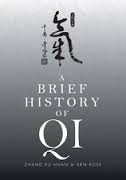
"The ancient Hindus wrote of prana, the invisible 'breath of life' that they cultivated through Yoga. Ancient Greeks described a concept which in several important aspects parallels the Chinese notion of qi with the word 'pneuma.' Like the Chinese qi, this Greek word is often translated into English as 'breath'— with similar misleading results. The Greek pneuma, like the Chinese concept of qi, was a complex idea that blended spiritual and material aspects of the vital essence of life into a comprehensive description of that without which life itself could not exist...
Also like qi in ancient China, pneuma was an important concept in ancient Greek medicine. It too was the substance with which people filled their lungs ('pneumon' in Greek). But like its Chinese counterpart, the Greek pneuma represented an even more vital substance. It took on the meaning of the breath of life, breathed into mortals by the gods.”
Yu Huan Zhang & Ken Rose, A Brief History of Qi
Trade Paperback Book, 2001, pp. 15-16
"There must be some primal force, but it is impossible to locate. I believe it exists, but cannot see it. I see its results, I can even feel it, but it has no form.” (Zhuang Zi, Inner Chapters, Fourth Century B.C.E.)
"Qi means air, breath, or vapour—originally the vapour arising from cooking cereals. It also came to mean a cosmic energy. The Primordial Breath is a name of the chaos (state of Unity) in which the original life force is not yet diversified into the phases that concepts of yin and yang describe.” (Kathleen Kuiper, The Culture of China, 2011, p. 103)
"Qi likewise is difficult to translate. The dictionary gives many meanings, including 'air', 'gas' and 'vapour'. To the early Chinese naturalists, this term seemed to bear some resemblance to what we now call 'matter-energy', corresponding in a way to the pneuma of the ancient Greeks and the prana of the ancient Hindus.” (Peng Yoke Ho, Li, Qi and Shu, 2002, p. 3)
"In every part of the world, already thousands of years ago, humans have speculated about some kind of life force. In China it is called qi (also spelled chi), in India prana, in ancient Greece pneuma, in Latin spiritus, and in Hebrew ruach. There are hundreds of life energy beliefs, which have many similarities. This encyclopedia presents and explains them all, showing their similarities, but also their differences.” (Book Description: Life Energy Encyclopedia: Qi, Prana, Spirit, and Other Life Forces around the World, Stefan Stenudd, 2009)
"In Eastern philosophy qi is also called prana and it is known that the body's natural production of prana increases through the raising of the kundalini energy via meditation and a yogic lifestyle. Because qi or prana runs on the neutrino level, it is very difficult to detect as qi is what fills the 99% of space in each atom.” Prof. Lu Zuyin, Scientific Qigong Exploration: The Wonders and Mysteries of Qi, 1997
"The scientific experiments introduced in this book (Scientific Qigong Exploration) opens up new doors for great scientific breakthroughs in the 21st century... Dr. Yan Xin's experiments indicate that our consciousness carry tremendous energy and information, and that qi energy can change DNA and RNA—an implication that human beings can completely redesign their life toward better health, longevity and even immortality. This is a book any visionary scientists and social scientists must read. Great minds will eventually be able to see the implications and set to work on unearthing the treasure of qigong for the common good.” Jing Lin, Associate Professor, University of Maryland
"The experiments themselves are kind of dry reading but the implications they have on the potential for human growth are staggering. And the scientists who conducted these experiments are not people who are easily swayed by whimsical tales and flights of fancy, they are hard core scientists and physicists who are among the top the Chinese have to offer.” Anthony D. Statler
Qi: "When it goes into man's chest, the man becomes a sage"
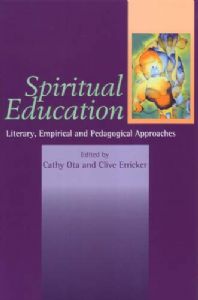
"What, if any, are the equivalent Chinese terms for 'spirit' and 'spirituality'? A brief consideration of this question provides some helpful background for understanding how the spiritual dimension of human life is conceptualized and expressed by the Chinese.
Etymologically, in Chinese 'it is probably qi that bears the closest resemblance to 'spirit' (Adler 1997). A simple comparison shows the basis for this judgment. According to Barnhart, 'The original English use of spirit are mainly derived from passages in the Vulgate, in which Latin spiritus is used to translate Greek pneuma and Herbrew ruah' (1999; 1047). Holl gives the original meaning of ruah as 'air in movement' (1998: 8), while Adler highlights 'the analogous words in Hebrew, classical Greek, and Sanskrit (ruach, pneuma, and prana) that similarly cover the range of meanings from wind and breath to spirit' (1997).
The original pictograph for the Chinese character qi consists of three roughly horizontal strokes representing parallel layers of clouds arising from the condensation of moisture. It thus denotes 'air, vapour, gas' (Lindqvist 1991: 172). Later, the pictograph for rice was inserted under the original strokes, probably to show the 'vapors' rising out of a saucepan of boiling grain (172). This composite pictograph became the present character for qi. Pas and Leung speculated that, in a natural extension of meaning, qi as vapours came to mean 'breath' (which in winter is very similar to steam). Because in many cultures 'breath' signifies 'life,' a further extension became understandable: 'vital spirit, vitality, vital breath, life energy, vital force' (1998:78). They stress the parallels qi has in other traditions, particularly regarding the fact that the same vital principle or energy that qi represents is supposed to course through both the cosmos and individual beings, quoting Mair's judgment that 'The same concept exists in the Indian tradition as prana, in the Greek tradition as pneuma, in the Latin tradition as spiritus, and in the Hebrew tradition as ruah' (Mair, quoted in Pas and Leung 1998:78).
Qi is a central term in both Daoism and Confucianism, the two dominant Chinese intellectual traditions influencing all aspects of life, from health to medicine, martial arts, fengshui (geomancy), to literature and various fine arts. A multiplicity of terms have been used for translating qi into English, including 'ether, elan vitale or vital force, humour, breath or psychosomatic force' (Lai 2001:446), but often it is simply left untranslated. Interestingly, qi is seldom translated as spirit, suggesting that, despite the commonalities, there are also important differences between the two.
In its most generalized sense, qi denotes 'the primal stuff out of which everything else in the universe condenses' (Van Norden 1996: 227). Its all-encompassing nature is exemplified by the following extracts from the ancient classis Guanzi:
'the qi of all things changes and thus becomes life'; 'when qi goes to the ground, grain grows; when it goes into the heavens, there emerge constellations; when it floats in the air, it becomes ghosts and spirits; when it goes into man's chest, the man becomes a sage,' and 'therefore when there is qi, there is life; when there is no qi, there is death.' (quoted in Tang, 1991:21)"
Cathy Ota, Clive Erricker, Spiritual Education
Sussex Academic Press, pp. 154-55
"The qi must have something to do with the pneuma mentioned by Jesus"
Spirit and Qi
"In Christianity the Spirit is God permeating God's own creation. According to the creation study in the Hebrew Scriptures, 'a wind [spirit] from God swept over the face of the waters' in the beginning of creation (Gen. 1:2).. Hence, the primary mission of the Spirit has to do with life, creating it, sustaining it and directing it towards its future destiny. The Spirit is the source of life, not only of the present life but of eternal life as well. The Spirit is within creation, but is not conditioned by creation.
Chinese theologians Chang Chun-shen and C. S. Song suggest that this Sprit is what the Chinese would call qi—air, breath and spirit. According to the teachings of Confucianism and Taoism, qi is the material origin of all things; it is at the same time the origin of the life-force and energy moving into action. Or rather it is in itself equipped with life-giving properties and energy for action. The following is a standard expression of qi:
Ch'i [qi] fills the space between heaven and earth. Heaven and earth themselves, all things between heaven and earth, are all constituted by ch'i. Because of ch'i everything between heaven and earth moves, changes, and functions. It itself moves and moves all things. It is the subject of changes and movements and the origin that causes them. Human beings and animal-plant life also consist of ch'i. The human body is filled with ch'i which comes and goes. The ch'i within the human body and the ch'i outside it are the same ch'i and interpenetrate one another.
The qi must have something to do with the pneuma mentioned by Jesus. 'The pneuma [air, wind or spirit] blows where it chooses, and you hear the sound of it, but you do not know where it comes from or where it goes' (Jn 3:8). This is the mystery of pneuma and qi. It is wind as well as spirit. It moves and works like wind, blowing where it wills. This actually is similar to the Old testament concepts of 'soul' and 'breath' and 'soul'.”
Zhihua Yao, In the Power of the Spirit
Tripod 91 (Jan.-Feb. 1996), pp. 29-30
"Chi serves as the mysterious bridge between God and humanity.”

"Chi and the Christian understanding of the Holy Spirit share many commonalities. The Old Testament ruach and the New Testament pneuma carry the same ambiguity of multiple meanings, as does Chi, such as 'breath, air, wind or soul.' The word ruach has its etymological origin in air, which manifests itself in two distinctive forms; that of wind in nature and that of breath in living things. Because God as Spirit manifests herself as wind, or ruach, she is also Chi...
The cosmic dimension of Spirit is expressed in the idea of Chi, the vital energy which is the animating power and essence of the material body. The Spirit is also breath in living things. Breath is none other than wind, the movement of air or ether in the living, which is also Chi. While wind brings nature to life, breath makes the living alive. In the Hebrew Scriptures, God's breath is identified with life-giving power (Genesis 6:17, Num. 16:22, Ps. 104:29; Eccles. 3:1, Isaiah 37:6 etc.) and the Spirit becomes a life-giving power in the birth of Jesus (Matthew 1:18-20; Luke 1:15, 35, 37). In these passages, we notice that Chi, the vital energy, which has her origin in God, is the life force of living creatures. Human beings live and die because of the breath of life, Spirit or Chi, which penetrates our entire bodies. If healing is associated with the circulation of Chi, it is certainly true that the Spirit as breath is not only the power that sustains and restores life but also the power that changes and transforms all living things. Therefore, it is important to allow Chi not only to heal our physical bodies, but also our mental and spiritual entities as well. All these concepts emanate the life giving Spirit which is in all things and is the Spirit God has provided us. It is the spiritual energy which inhabits all of us as it is an utterly dynamic living and vital force. Chi serves as the mysterious bridge between God and humanity.
Chi, like pneuma, is translated as 'breath,' 'energy,' 'ether' or 'material force,' but is better rendered as 'matter-energy.' Chi is pervasive in the universe, giving rise to all things, endowing them with life and energy. It is a substrative psycho-physical reality underlying the world as it appears to our consciousness and corresponding in a way to the pneuma of the ancient Greeks. The Great Ultimate is full of Chi. Chi is not only all-pervasive reality but also undifferentiated singleness. According to this concept of Chi, the distinction between wind and breath is simply one of modes of manifestation. Chi is the essence of all life and all existence. Without Chi, life does not exist and if there is no Spirit, nothing living can exist. God as the life-giving spirit is the proper source of life and strength. In a derivative sense, ruach also denotes the life-force of the individual (Judges 15:19) and of the group (Num. 16:22).
Chi is the ultimate reality and is immanent in all things. Because all things in the universe consists of Chi, no being can exist apart from Chi. There is no place where there is no Chi; the sky, the sun and the moon are accumulated Chi. This notion of the Spirit as Chi assists us in reaffirming the idea of divine immanence or Immanuel, God is with us. Due to interchangeability of Chi and Spirit, the concept can be captured in the combined term of Spirit/Chi. This means that God is in all things, which allows one to realize that everything exists in God and that everything exists because of God.
Andrew F. Walls, Akintunde E. Akinade, A New Day
Peter Lang Pub Inc (Jun 15 2010) pp. 293-95
Question: "Is the Kundalini the same force that exists all around us as the Chinese call Chi?”
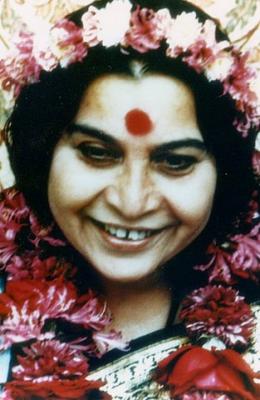
Shri Mataji Nirmala Devi was
Christian by birth, Hindu by
marriage, and Paraclete by duty.
"The Paraclete represents direct,
intimate divine intervention,
supporting and teaching
believers and challenging the
world, as Jesus did.” (D. Stevick
Jesus and His Own, 2011, 290)
Lao-Tse is the man who talked about this thing, He's the one who told them about Kundalini and they don't know who is Lao-Tse. Especially in America, I don't know what sort of Chinese live here.
it's such a great source of knowledge, and what they have said is a perfect thing.
But everything gets integrated in Sahaja Yoga. All the knowledge, all the scriptures, everything gets integrated. Absolutely integrated because out of light you see the truth in all of them. There is truth in everything, there is truth in every religion.
But religion now has become money-oriented, or also power-oriented, so it's gone off.”
The Paraclete Shri Mataji
Public Lecture, New York, USA, 1999
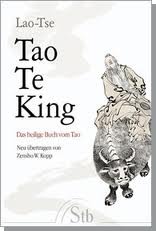
"He dwells in inner abundance
and not in outward appearance.
He does not cling to the shell
and lives solely from the essence (38)
In the Tao Te King, Lao-tse constantly emphasises how foolish it is to strive for honour, riches and esteem. Wisdom consists in becoming without desires and living modestly in natural simplicity. In the stillness of inner seclusion the wise one experiences his oneness with the Tao, the eternal mother of the universe. As its child, he trusts in its support and security beyond death since:
He who has found his mother,
knows himself as her child.
Knowing himself as her child,
he remains constantly close to The Mother,
when the body wanes, he is without peril. (52)
Having thus returned to one's true, original nature, one's whole essence resides in harmonious unison with the all-embracing wholeness of existence. It reveals itself in the nature of a bird, which sings out of inner freedom and lives in coessential balance with heaven.
Lao-tse recommends us to follow the way of heaven, to practise non-action and thus let the power of true virtue act within us. For heaven is without action but is the cause of all things, literally: 'Wei-wu-wei', acting non-action.
He who is rooted in Tao and lives in unison with the harmonious movement of heaven becomes a revelation of Tao in the world and attains immortality beyond death.
If one possesses the eternal mother of the world,
one can persist eternally.
I call this: deeply rooted and well-founded in Tao.
This means:
eternal life and endless contemplation.”
Tao Te King: The Holy Book of Tao
Zensho W. Kopp, Books on Demand (September 9, 2011)
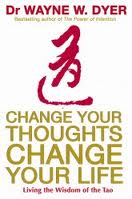
"it's vital that you spend a few moments each day getting to know your (and my) eternal Mother, which you can do by simply acknowledging her presence and silently communicating with her. Once you decide to know and honor her, you'll begin to change the way you look at all of her children, including yourself. You'll view all of the 10,000 things as offspring of The Mother, and you'll look beyond the temporariness of their appearances to see the Tao unfolding. This is what Lao-tzu means when he asks you to know the children not as separate from their Mother, but as The Mother herself. So see all of creation as originating in The Mother, and then 'go back and hold on to' her.”
Change Your Thoughts, Change Your Life: Living the Wisdom of the Tao
Wayne W. Dyer, Hay House (January 1, 2009) p. 254
“The Kundalini is your own mother; your individual mother. And She has tape-recorded all your past and your aspirations. Everything! And She rises because She wants to give you your second birth. But She is your individual mother. You don't share Her with anybody else. Yours is a different, somebody else's is different because the tape-recording is different. We say She is the reflection of the Adi Shakti who is called as Holy Ghost in the Bible.”
The Paraclete Shri Mataji
Press Conference, 1999—London, UK
Related Articles:
Taoism - Religion or Philosophy?
The Tao-te ching and Lao-tzu
Qi is a Chinese term that is translated as breath, vapour, and energy
Taoist concepts of the subtle body and centers
Disclaimer: Our material may be copied, printed and distributed by referring to this site. This site also contains copyrighted material the use of which has not always been specifically authorized by the copyright owner. We are making such material available to our readers under the education and research provisions of "fair use" in an effort to advance freedom of inquiry for a better understanding of religious, spiritual and inter-faith issues. The material on this site is distributed without profit. If you wish to use copyrighted material for purposes other than “fair use” you must request permission from the copyright owner.